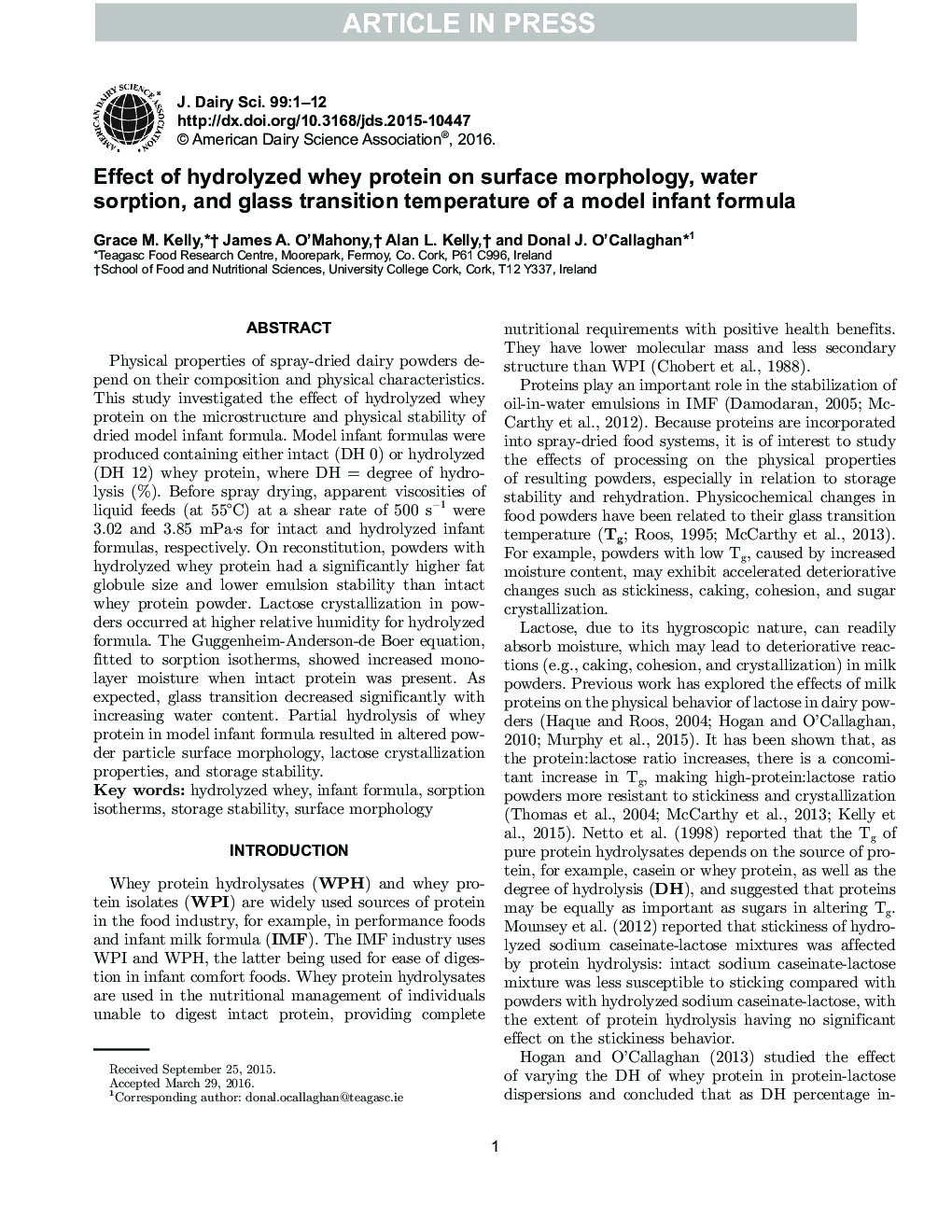| Article ID | Journal | Published Year | Pages | File Type |
|---|---|---|---|---|
| 5542808 | Journal of Dairy Science | 2016 | 12 Pages |
Abstract
Physical properties of spray-dried dairy powders depend on their composition and physical characteristics. This study investigated the effect of hydrolyzed whey protein on the microstructure and physical stability of dried model infant formula. Model infant formulas were produced containing either intact (DH 0) or hydrolyzed (DH 12) whey protein, where DH = degree of hydrolysis (%). Before spray drying, apparent viscosities of liquid feeds (at 55°C) at a shear rate of 500 sâ1 were 3.02 and 3.85 mPa·s for intact and hydrolyzed infant formulas, respectively. On reconstitution, powders with hydrolyzed whey protein had a significantly higher fat globule size and lower emulsion stability than intact whey protein powder. Lactose crystallization in powders occurred at higher relative humidity for hydrolyzed formula. The Guggenheim-Anderson-de Boer equation, fitted to sorption isotherms, showed increased monolayer moisture when intact protein was present. As expected, glass transition decreased significantly with increasing water content. Partial hydrolysis of whey protein in model infant formula resulted in altered powder particle surface morphology, lactose crystallization properties, and storage stability.
Related Topics
Life Sciences
Agricultural and Biological Sciences
Animal Science and Zoology
Authors
Grace M. Kelly, James A. O'Mahony, Alan L. Kelly, Donal J. O'Callaghan,
